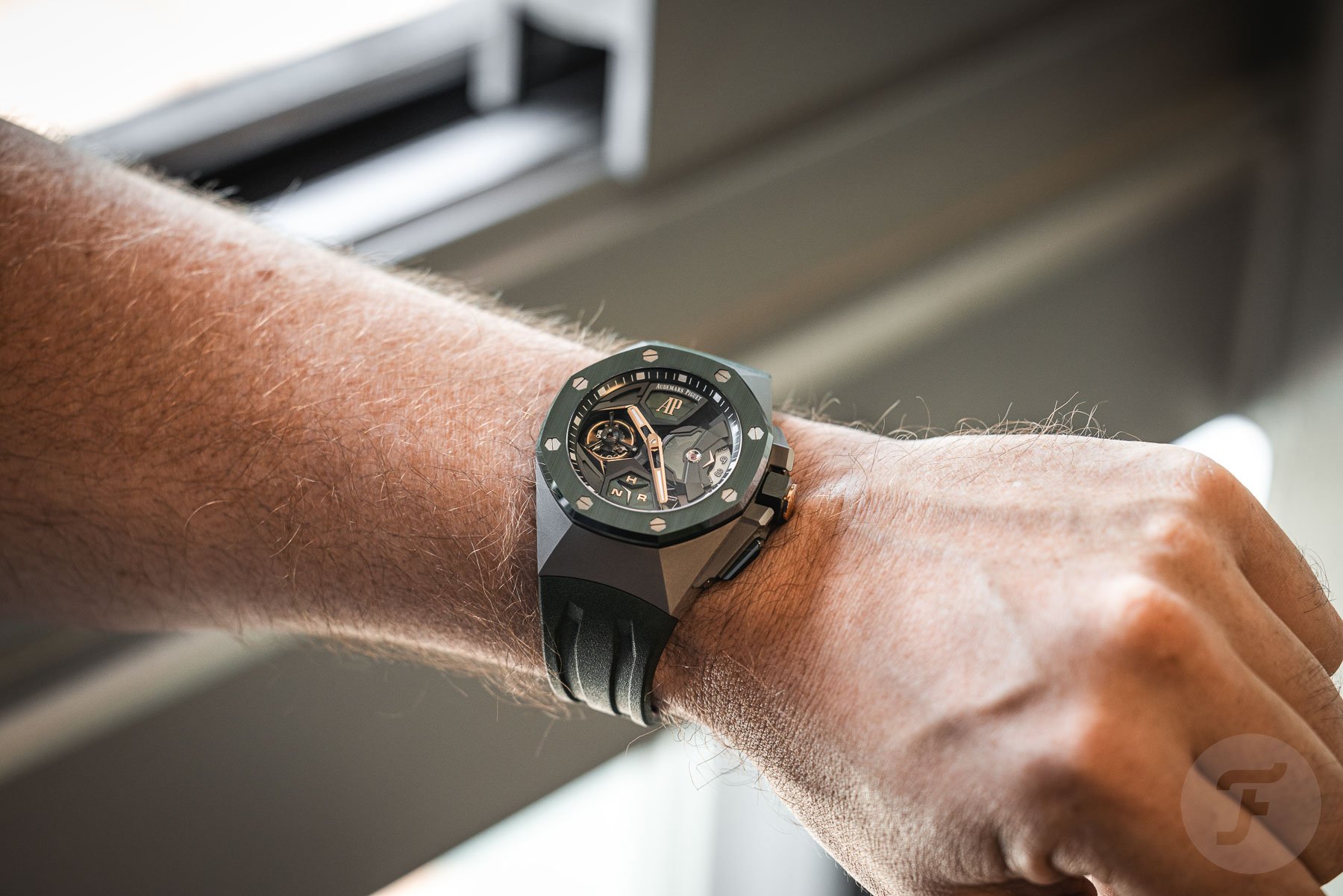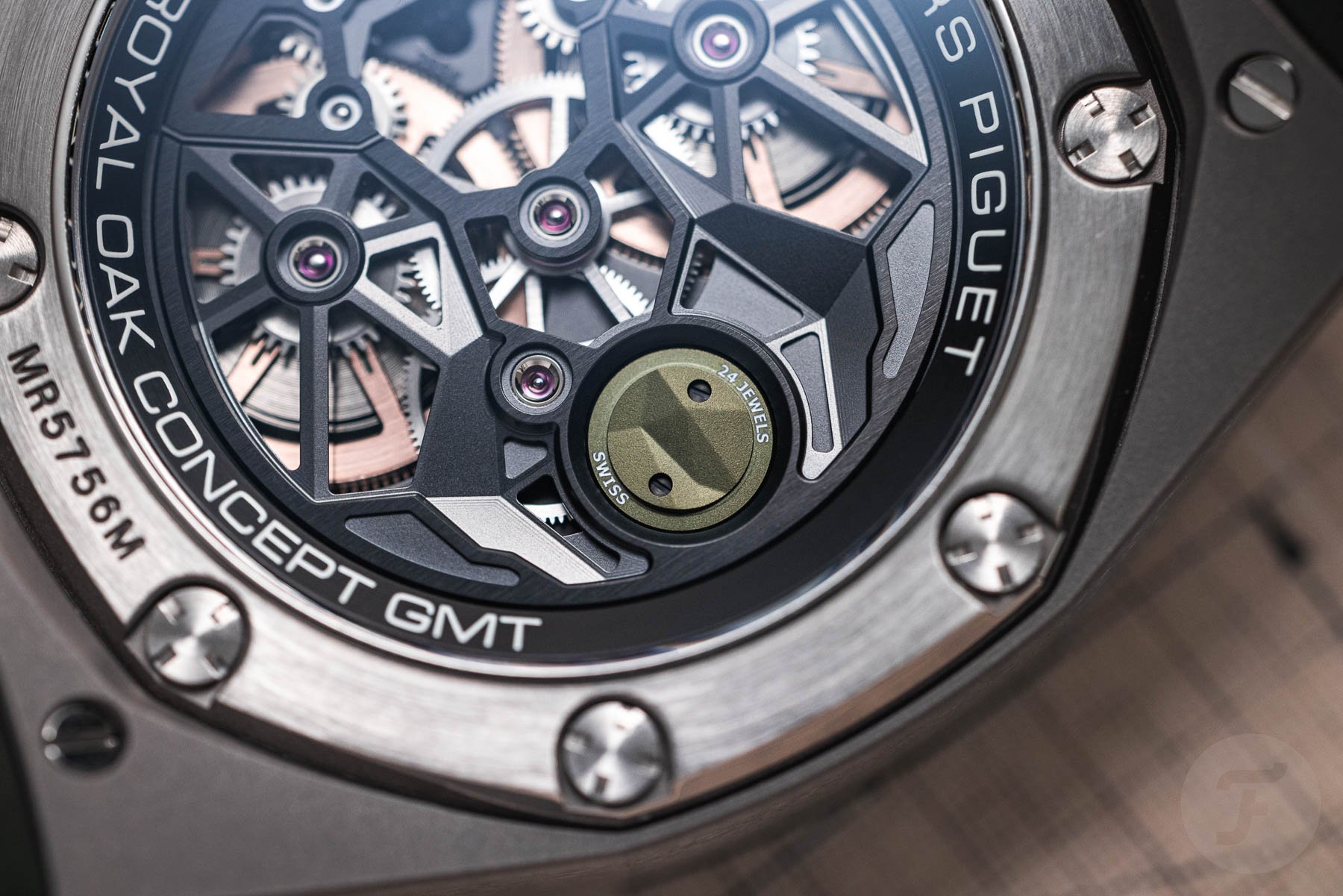In The Presence Of Awesomeness — Audemars Piguet Royal Oak Concept Flying Tourbillon GMT And Split Second Chronograph GMT Large Date
Concept cars are the best cars in the world. The toned-down versions that reach production always show the permanent scars of endless meetings and cold, calculative Excel sheets. The Audemars Piguet Royal Oak Concept Flying Tourbillon GMT and Split Second Chronograph GMT Large Date show no signs of scars. These wild watch concepts are actually for sale! The only hindrance in acquiring an “AP ROC” is, of course, the very steep price. Luckily, at Fratello, we come across awesome Haute Horlogerie creations that we might never own but get to experience anyway.
The fact that the first Audemars Piguet Royal Oak Concept watch made it to the shop floor in 2002 was never the brand’s original intention. The Concept was, in the first place, exactly what the name suggests — a concept. According to Sébastian Vivas, the Museum and Heritage Director at Audemars Piguet in Le Brassus, the Royal Oak Concept was a “stylistic exercise.” Still, the brand decided to release the most futuristic of all Royal Oak iterations, the CW1. The Concept Watch 1 had a case made of Alacrite 602, a very hard alloy normally used in the aerospace industry. Inside the angular case beat the entirely new and complicated caliber 2896, conceptualized and produced by the watchmaking wizards at Renaud & Papi. Back in 2002, its 70-hour power reserve was quite something. Its dynamographe, which indicates the torque from the mainspring, still is.
Audemars Piguet Royal Oak Concept Flying Tourbillon GMT
The CW1 paved the way for many exclusive and complicated Royal Oak Concept timepieces to come. Two decades after the CW1, the Royal Oak Concept Flying Tourbillon GMT (ref. 26589IO.OO.D056CA.01) burst onto the scene in its green ceramic attire. The 44mm angular, faceted case is titanium, but the bezel is made of green ceramic. These are great materials, yes, being lightweight and all. But that’s not what makes this ROC a drool-worthy watch. It’s the supreme manual finishing. This ROC is not simply a cool watch. It is, above all, the result of an Haute Horlogerie approach to watchmaking. Unfortunately, no matter how good the pictures are — thanks, Morgan, for doing an amazing job once again — the tactile sensation and the dynamic yet subtle “live” look of the materials AP used to compose this ROC simply can’t be captured by a camera.
Gimmicks and features
Under the skeletonized dial, you can admire the black, hand-wound, architectural AP caliber 2954 featuring green CVD-colored inserts. As the name of the watch suggests, it features a flying tourbillon and a GMT function. Another very typical feature of a Royal Oak Concept (and also of Renaud & Papi) is the indicator that shows the position of the crown. You will also see it on Richard Mille watches that use movements developed by Renaud & Papi. The indication is at 6 o’clock where you will find the letters H (setting the time), N (neutral), and R (winding the movement). Is it useful? We can debate that. Is it cool? That’s also debatable, but you can objectively say that it’s a sign of Haute Horlogerie.
The flying tourbillon is easy to spot, but what about the GMT function? It all starts with the pusher at 4 o’clock that allows you to advance the hour hand. And if you move your eyes to the 3 o’clock position, you will see the indicator for a second time zone. And since the Royal Oak Concept Flying Tourbillon GMT is showcasing high watchmaking, the GMT display is something special indeed. For example, the display consists of two discs. One disc, which makes a full rotation every 12 hours, is made of sapphire, and on it, you find the numerals that indicate the hours. And to tell you day from night, the other disc rotates every 24 hours, using the color white for the daytime and green for the nighttime.
It’s what you don’t see that matters
Often, Haute Horlogerie is about the invisible things. I’m talking about movement components that you will never lay eyes on but that are finished to the highest possible standards. And sometimes, it’s also about technical features. In the case of the AP caliber 2954, the invisible allure lies within the two barrels and the way the power from the mainsprings is transferred to the movement.
The 10-day power reserve is a practical feature, and a clever technical one ensures that both barrels deliver constant force. You can’t see it, but what the mechanism does is reduce pressure on the gearing and friction. The result of this is greater precision, ample power reserve, and improved reliability. A Royal Oak Concept does what it promises with its looks and pushes the traditional craft of watchmaking forward.
Audemars Piguet Royal Oak Concept Split Second Chronograph GMT Large Date
The second ROC watch we managed to get in our hands and in front of our lens also features a GMT function, but it forgoes on the flying tourbillon. Instead, it features a split-seconds chronograph and a large date. The Royal Oak Concept Split Second Chronograph GMT Large Date (ref. 26650TI.OO.D013CA.01) looks avant-garde, complicated, and downright intimidating. Interestingly, the case is a new one. The ROC Split Second Chronograph GMT Large Date has a new 43mm titanium case with a subtle mix of different finishes. There’s sandblasting for a futuristic and industrial look, satin brushing for a tool-watch vibe, and polished surfaces connecting to the history of traditional Haute Horlogerie. You also get sharp and edgy-looking parts like the pushers in modern ceramic.
Follow the colored markings
Inside the facetted case (that’s a complication in itself) beats a brand-spanking-new movement. The automatic caliber 4407 combines a flyback chronograph with a split-seconds function, a display for a second time zone, and a large date. Despite the open-worked dial that offers a glimpse of the mechanical complexity below, the watch is pretty legible. A touch of red for the chronograph functions and yellow for the GMT work wonders. And the big date on two discs functions like a visual beacon.
As the foundation of this movement, AP used the caliber 4400 — the much-anticipated in-house automatic chronograph movement with a column wheel and vertical clutch that debuted in the Code 11.59 and is now also in other collections — and figured out a way to turn into a rattrapante chronograph. The genius of this technical accomplishment can be admired through the sapphire case back of the watch. What you see is a semi-peripheral platinum rotor with part of the split-second mechanism in the center. Why is it there? One reason is that it helps keep the movement thin. The other reason is that it looks nothing short of spectacular.
Prices of both Royal Oak Concept models
Do you want to know the prices of both the Royal Oak Concept Flying Tourbillon GMT and Split Second Chronograph GMT Large Date? Audemars Piguet doesn’t want you to know. Well, the brand doesn’t want to shout it from the rooftops since these delightfully complex creations are for an exclusive group of people who won’t be startled by hearing the price, unlike most common folk. The version with the rattrapante chronograph has a price of CHF 170,000 excluding taxes.
The Concept with the flying tourbillon is a bit more expensive with a price of CHF 198,900 before taxes. If I had to choose — I don’t, and I’m in no position to — I would opt for the Royal Oak Concept Split Second Chronograph GMT Large Date because that watch is easier to combine with my wardrobe. I also have more watch-function-related arguments for my choice, though. The Concept with the double chronograph is my watch of choice because, with this Royal Oak iteration, I can time two differently boiled eggs in every time zone around the world. Which of the two Concepts do you prefer? Let me know in the comments.
This is a preferred-position post. Learn more.















